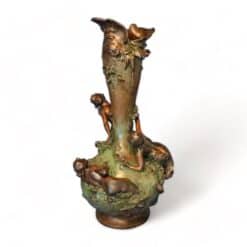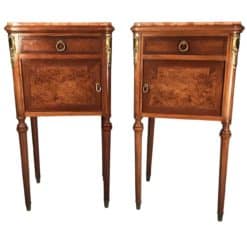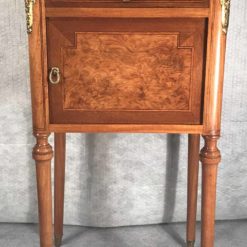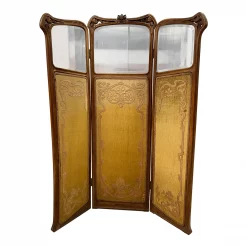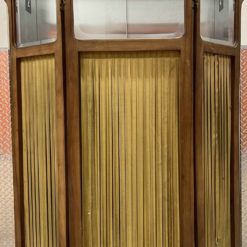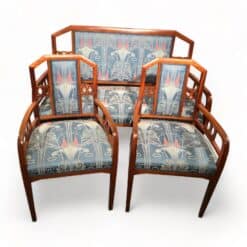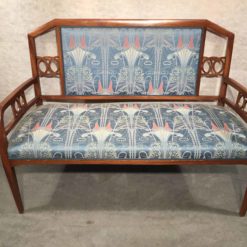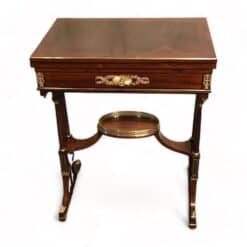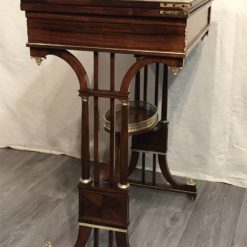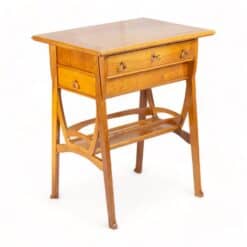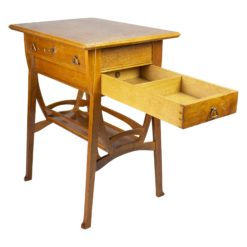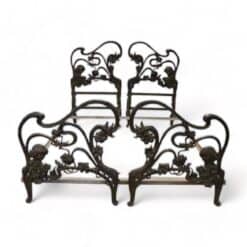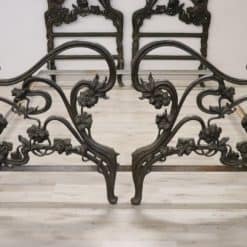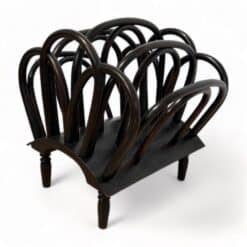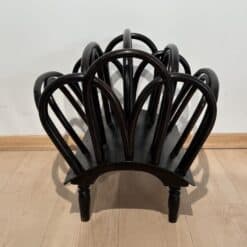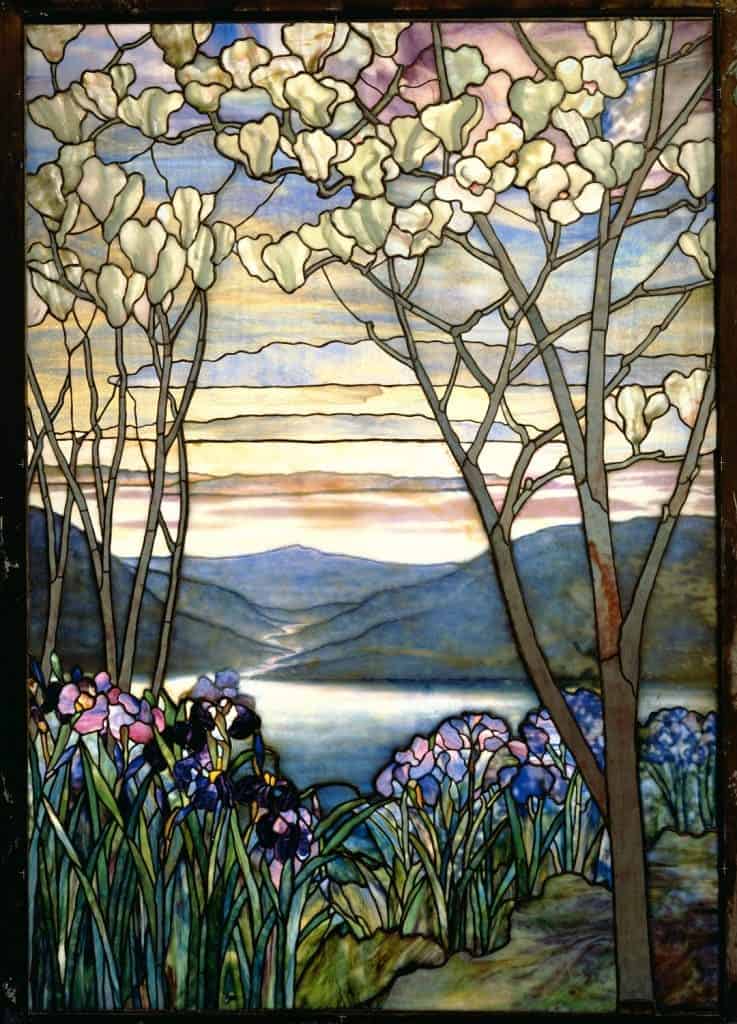Best Sellers
Styylish History
Art Nouveau In America
History of Art Nouveau in America
From 1890 to 1910, Art Nouveau flourished across Europe. It embodied a spectrum of styles and had many names (i.e., the Glasgow Style in Scotland and Jugendstil in Germany).
While it varied stylistically from country to country, the movement itself maintained the same core beliefs. Primarily, it strived to modernize current design practices and avoid traditional designs.
Additionally, Art Nouveau’s aim was cultivating appreciation for craft-based decorative arts versus traditional liberal arts.
Art Nouveau reflected the world’s feelings while reconciling new technologies and changing society with old traditions and customs.
Until the outbreak of World War I, it was the predominant art style around the world. During the course of and after the war, societal attitudes shifted, and Art Nouveau fell out of style.
Despite its abrupt end, many now recognize Art Nouveau as a critical link between Neoclassic and Modern design.
First Impressions in America
The U.S. was introduced to Art Nouveau in 1890 when copies of Harper’s magazines made its way from France and England.
At the time, the periodical had hired Eugene Grasset to design the covers for several issues. His illustrations often portrayed Art Nouveau-style women with long, sweeping hair amid natural elements.
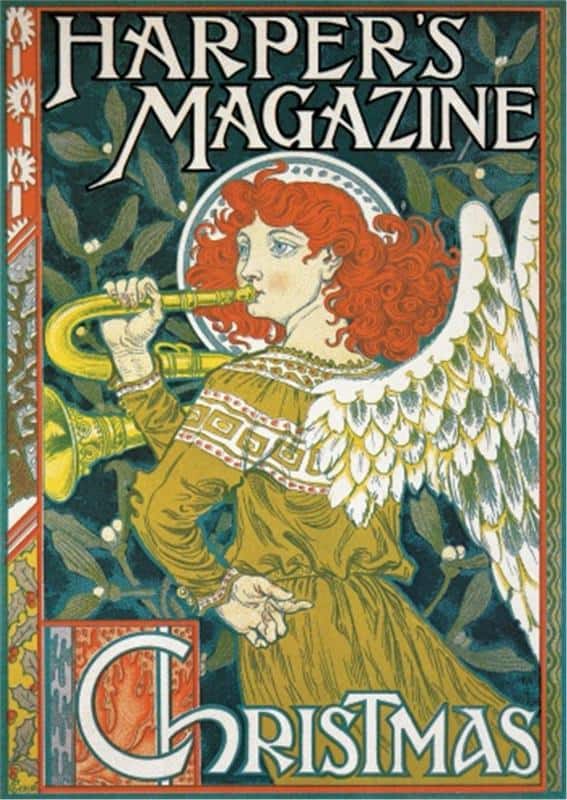
Grasset’s work resonated with the American audience, and soon newsstands sold magazines and posters with Art Nouveau illustrations.
Grasset’s paintings opened the door for the style’s development in the U.S. He inspired Louis Rhead, who adopted Grasset’s style and became a famous commercial painter for multiple publications.
Characteristics of American Art Nouveau
Natural and geometric patterns, now characteristic of this style, inspired most Art Nouveau designers. Artists expertly balanced angular contours and utility with fluid, organic forms.
A distinctive feature of Art Nouveau is asymmetrical, fluid lines, often found in flower stems, buds, vines, wings, and similarly beautiful, organic forms.
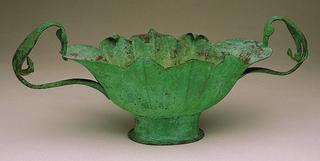
Lines could either be polished and delicate or project a robust and powerful appearance. Linear contours took priority over color, which consisted mainly of muted greens, browns, yellows, and blues.
In nearly every artistic field, but especially architecture, structure, and embellishment melded together.
Exotic themes from Asia, like Japanese prints and ceramic glazing effects, were a particular favorite among designers, specifically Louis Tiffany.
Nature in all its forms became dominant figures in imagery and ornament:
- Birds
- Insects
- Flowers
Also, female characters with long hair became the focus of many illustrations.
Art Nouveau Furniture
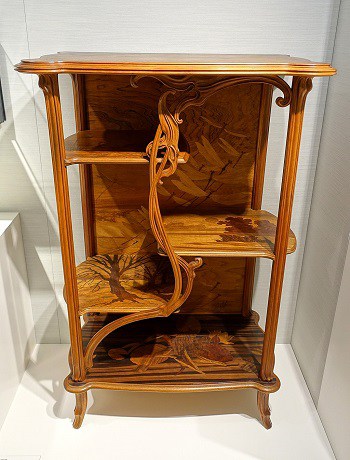
Unlike other countries, American Art Nouveau furniture was influenced more by the Arts and Crafts movement or historic American designs than Art Nouveau.
One of the first American designers to make Art Nouveau-style furniture was Charles Rohlfs. He also included Celtic and Gothic motifs in his many white oak furniture designs.
Furniture makers and architects often used the same materials, like glass, ceramic, metal, and wood.
Walnut, oak, teak, and other hardwoods were popular choices for furniture. Designers mixed mahogany and maple with ebony or snakewood and finished with a beautiful varnish. Some decorated surfaces with inlay or added bent, curving metal.
American Art Nouveau furniture followed some of the principals of the ongoing Craftsmen and Arts and Crafts movements.
For example, while machines did build some pieces, much was handcrafted. The high degree of skill needed to make it meant high prices, which partly led to its decline in popularity around 1910.
Designers and Craftsmen
Louis Comfort Tiffany (1848 – 1933)
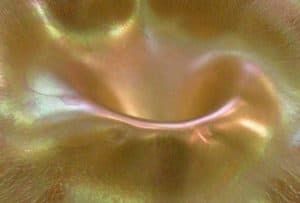
Louis Comfort Tiffany, the master artist behind Tiffany & Co., was a pivotal figure in American Art Nouveau.
He studied at the National Academy of Design in New York and at 24, began working with glass, soon entering his father’s business.
By 1885, Tiffany established his own fine glass company and developed new ways of coloring.
Tiffany produced vases and bowls in 1893 using innovative methods, yielding unique shapes and coloring.
During this time, he also experimented with decorative windows by
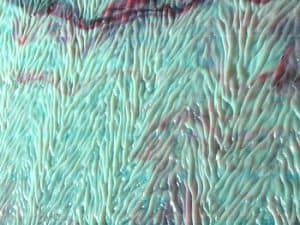
printing, marbling, and superimposing layers of glass.
This technique gave his windows a distinct depth and richness as well as
diverse coloring. In 1895, the Art Nouveau gallery of Siegfried Bing exhibited Tiffany’s work, which attracted European clientele.
In 1902, Tiffany became the head of the company after his father’s death but continued experimenting with decorative glass techniques.
Thomas Edison recommended that Tiffany make electric lamps and found a way to market them. Tiffany’s designs iconize the American Art Nouveau style.
Lampshades featured multicolored glass mosaics framed with bronze or iron — a team of designers and artists designed each lamp as well as several series and editions.
It wasn’t just the Tiffany lamp that popularized Art Nouveau. The company’s exceptional craftsmen produced windows, vases, and others.
Tiffany and his company gained more prominence during the 1900 Paris Exposition where his piece, The Flight of Souls, earned a gold medal.
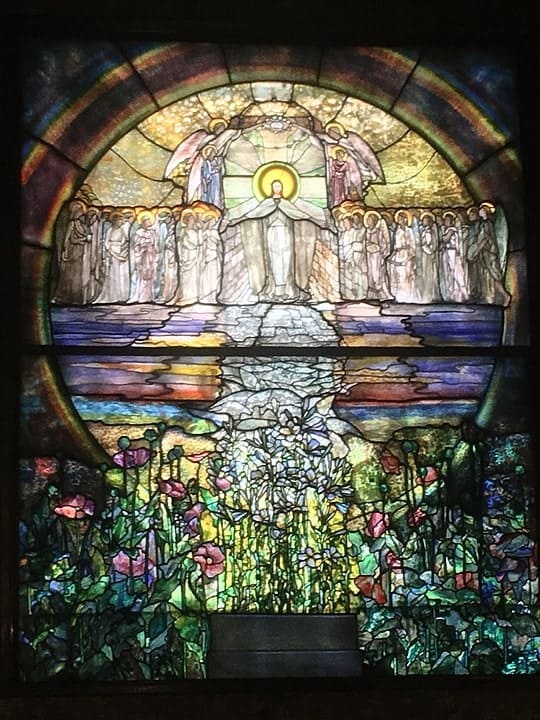
Another critical moment for Tiffany was the Columbian Exposition in Chicago, where he debuted the Tiffany Chapel.
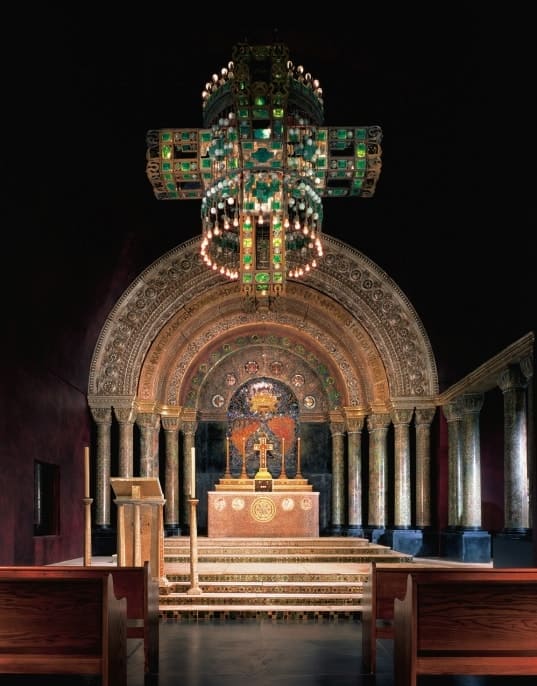
Louis Sullivan (1856 – 1924)
One of the country’s leading architects, Louis Sullivan, led the way in modern architecture and played a significant role in the emergence of Art Nouveau in America.
Sullivan founded the Chicago School, designed some of the earliest skyscrapers, and taught Frank Lloyd Wright. He also firmly believed that form followed function.
Although function shaped the form of Sullivan’s structures, he generously decorated them with Art Nouveau features.
Sullivan earned further acclaim at the 1893 Columbian Exposition (home of the White City). There, he created an elaborate Art Nouveau-style entrance for the highly practical Transportation Building.
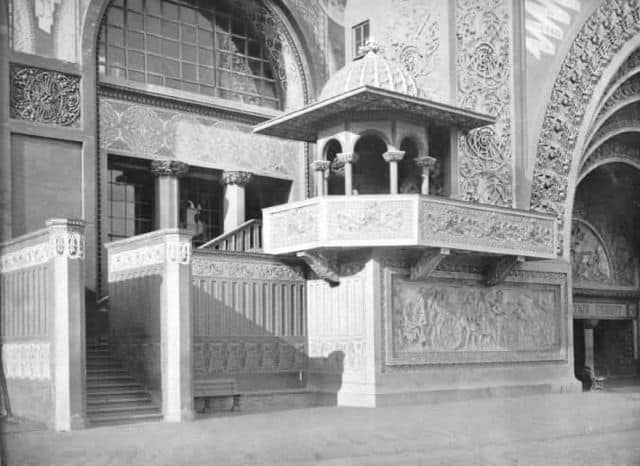
In 1899, he designed the Carson, Pirie, Scott and Company Building, now the Sullivan Center. The structure was distinctly modern and functional, with stylized botanical ornamentation around the windows.
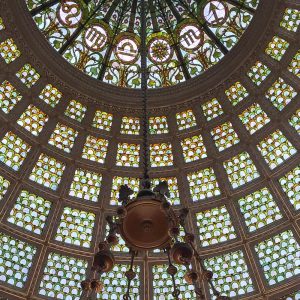
Sullivan also developed original decorations for the National Farmer’s Bank of Owatonna in Minnesota (1907-1908) as well as the Merchants’ National Bank in Grinnell, Iowa.
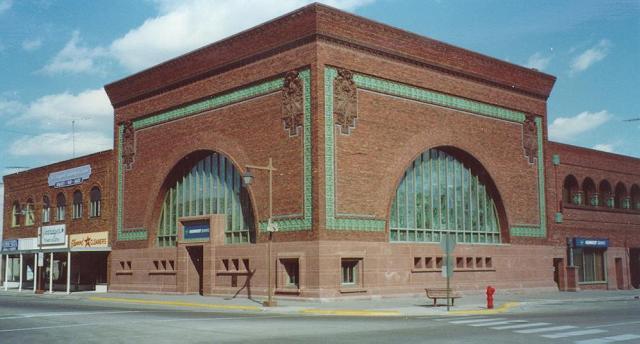
His work, which sometimes combined Gothic and Art Nouveau motifs, gave a distinctly American quality to this style. He also maintained that there should be no end to the blending of decorative styles.
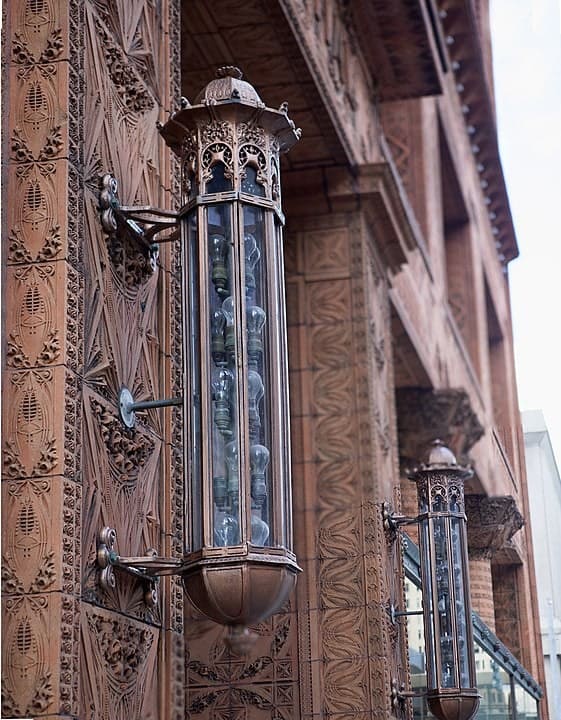
Charles Rohlfs (1853 – 1936)
Charles Rohlfs never trained as a furniture maker, yet he became an early American Art Nouveau furniture designer. His works are the epitome of the Arts and Crafts movement.
Rohlfs began designing furniture for his family in 1888 and started his professional career in 1897. He opened a shop and made original pieces he called “artistic furniture” or the “Rohlfs style.”
In 1899, Rohlfs entered a brief and unsuccessful partnership with retailer Marshall Field. Then in 1900, he exhibited his work at New York’s Arts and Crafts Exhibition.
Soon, he found fame the next year at the Pan-American Exposition.
At the 1902 International Exposition of Decorative Arts in Turin, Rohlfs received significant exposure. Soon afterward, he became a member of the Royal Society of Arts in London.
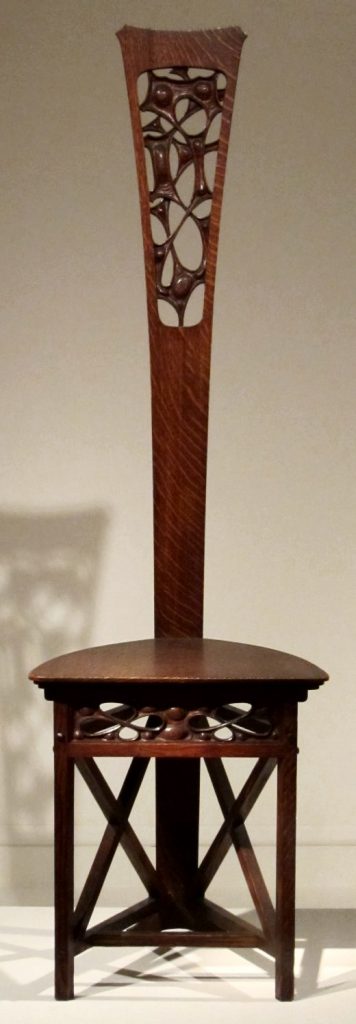
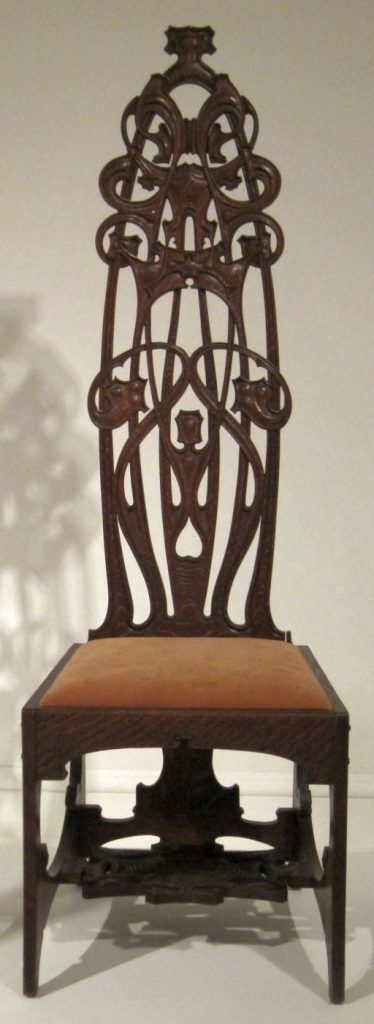
The Style of the Roaring Twenties
Art Nouveau’s influence rose to a global level in spite of its brevity and drastically impacted several areas of art.
It brought about the first examples of modernism and incorporated it into traditional designs. For a time, this style was evident in nearly every facet of life.
During the late 19th century, Art Nouveau had its heyday in architecture and graphic art. But, it remains immensely trendy and is sure to become more popular over this decade.
Styylish
Visit the Shop for beautiful and unique antique furniture from around the world.
Don’t know what to do with that antique dresser or how to freshen it up? Check out the Blog for decorating ideas, care tips, and more.

